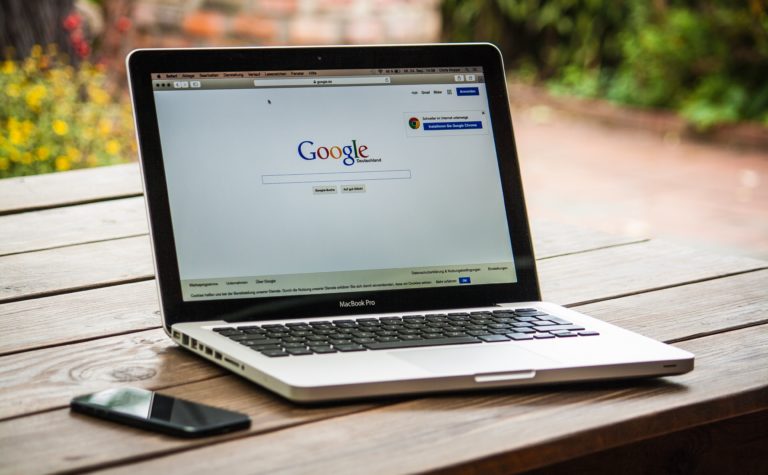Where Do H-1B Visas Go?
In January 2010, the senior executives at Molina Healthcare, located in Long Beach, California, conducted a staff meeting. Dozens of people in Molina’s IT department would have to be laid off, the executives announced, because the company had done so poorly in the preceding quarter. What the laid-off employees did not suspect at the time was that on the day before the staff meeting, the U.S. Department of Labor had approved applications for forty temporary workers from India (on H-1B visas) to replace them at Molina Healthcare. The laid-off workers, all U.S. citizens or lawful permanent residents, earned an average of $75,000 a year plus benefits. Their replacements would earn $50,000 a year with no benefits.
Big companies have been just as guilty of abusing temporary worker visas as smaller companies. In October 2014, 250 IT employees at Walt Disney Parks and Resorts in Florida were told that they would be laid off. Layoffs, of course, are not uncommon, but what made this layoff newsworthy was the sense that the workers had been insulted. They were told that in order to receive their severance pay, they would be obligated to train their own replacements – IT workers from India entering the United States with H-1B visas.
In response, two former Disney tech employees filed federal lawsuits against the company in January 2016, accusing Disney of conspiring to replace the workers with less costly foreign employees using H-1B visas. The lawsuits were filed in federal court in the Middle District of Florida by Leo Perrero and Dena Moore, who were among 250 Disney tech workers laid off in October 2014. The lawsuits seek class-action status.
Separately, more than twenty of the laid-off Disney workers have also filed complaints with the Equal Opportunity Employment Commission (EEOC). Those complaints remain under EEOC review. The complaints allege employment discrimination by Disney based on nationality, race, and age. The incident at Disney also launched another round of contentious debates about the use – and some would charge, the abuse – of H-1B visas. For international workers with a college degree and specialized skills in the STEM fields (science, technology, engineering, and math), the H-1B is a temporary, nonimmigrant visa that is good for three years and renewable for a second three years.
Why the Controversy?
Two competing, conflicting narratives confuse the H-1B visa debate and to some extent the entire question of immigration in the United States. One narrative tells us that immigrants are taking jobs from U.S. workers, and it emphasizes stories like the incidents at Molina and Disney. The other narrative says that attracting talented workers in science, math, engineering, and technology is essential for U.S. economic success and growth in the years ahead.
Currently, Congress caps the number of available H-1B visas at 65,000 a year (and another 20,000 for post-graduate degree-holders in STEM fields). Google’s Eric Schmidt, Facebook’s Mark Zuckerberg, and Microsoft’s Bill Gates are all strong advocates of increasing the number of available H-1B visas as a means of increasing U.S. technical and commercial ingenuity and strength.
The question many are asking about H-1B visas is simply this: Do international workers in the H-1B visa program fill a genuine gap in the labor force, or is the H-1B program being abused by some U.S. corporations simply as a way to save a few dollars at the expense of U.S. workers? Even the most expert economic researchers disagree. A report by the Economic Policy Institute alleges that some U.S. companies exploit the H-1B program merely to cut their labor costs.
The Brookings Institution, however, has figures showing that the international workers who hold H-1B visas are actually making more than their comparably-talented American counterparts in similar positions. The H-1B visa program was designed so that U.S. companies could fill gaps in the work force with specialized employees they cannot find in the United States, but some companies apparently try to take advantage of the H-1B program’s technicalities and loopholes.
In fact, one corporation has already been fined for engaging in visa fraud. Infosys paid the government a $34 million penalty in 2013. Exploiting the H-1B visa program to boost the corporate bottom line is something we can all understand, but that is not what H-1B visas are for, and the government is now taking measures to ensure that the program remains fair to U.S.-based workers like those laid off by Disney and Molina.
A large number of workers flooding into the United States and displacing U.S.-based workers is not what Congress intended when the H-1B visa program was established, so in 2015, the Department of Labor announced that it is beefing up its enforcement efforts and will be investigating companies that may be taking unfair advantage of the H-1B visa program.
Who Gets the Visas?
Where do H-1B visas actually go? One-fifth of all H-1B petitions approved in 2012 went to just four companies: Cognizant Technology Solutions, Tata Consultancy Services, Infosys, and Wipro. The latter three are among India’s biggest outsourcing giants. Cognizant, based in New Jersey, emerged out of a partnership between Dun & Bradstreet and an Indian firm. Many U.S. companies – Walmart and 7-Eleven, for example – hire these outsourcing firms for their IT needs.
When Molina Healthcare fired its IT staff, for example, it did not apply to the government for H-1B workers to replace them. Instead, Molina got its new employees through Cognizant. And Infosys isn’t the only outsourcing company that has been investigated and targeted for legal action. In 2013, Tata Consultancy Services paid $29 million to settle a class-action lawsuit brought by Indian workers who were being forced by the company to hand over their U.S. income tax refunds.
Of course, when the H-1B visa program was invented by Congress back in 1990, no one thought that Indian outsourcing firms would be the biggest participants and beneficiaries. Does any of this mean that a typical small or midsize U.S.-based business cannot benefit from the H-1B visa program? Not at all. Even with the annual visa cap still set at 65,000, the government is working harder now than ever to ensure that the awarding of visas is conducted fairly and that no U.S.-based employer has an advantage over any other employer in the H-1B competition.
Employers across the nation are already preparing for this year’s April 1 filing date, but if you haven’t started preparing, it’s probably too late to begin for this year, although it’s never too early to start preparing for next year’s H-1B filing period. The qualifications for H-1B visas are quite strict, and as you already know, the demand far exceeds the supply for these visas.
Where Can Employers Find Help?
If you are an employer in the United States, a good immigration lawyer can help your company meet all of the requirements for obtaining H-1B visas, provide you with precise, comprehensive information, and help you avoid the mistakes and misunderstandings that keep many employers from obtaining the H-1B visas they need.
In other words, an experienced immigration attorney can put employers in the best possible position to obtain H-1B visas and can probably also help employers identify appropriate visa alternatives to the H-1B. Employers who need H-1B visas should arrange to speak at once with an experienced Dublin immigration attorney.
Work authorization through the H-1B program is strictly limited to employment offered by a sponsoring U.S.-based employer. H-1B regulations do not compel a visa holder to remain with the sponsoring employer for a specific length of time, provided that a new qualifying employer agrees to sponsor the employee for another H-1B visa. And while a handful of companies still receive quite a large number of H-1B visas, there’s nothing preventing your company from obtaining H-1B visas if the other immigration and employment requirements are met.
U.S.-based companies applying for H-1B visas must prove they are “real” companies by showing the government documents like tax returns, a tax ID number, or financial statements. An H-1B visa petition will be rejected without adequate accompanying documentation. The application may also be denied if the job that’s being offered is not a “specialty” occupation. A good immigration lawyer can tell employers exactly what will be required.
U.S.-based companies that hire foreign national employees with H-1B visas should understand from the start that they will have to comply with scores of sometimes confusing immigration laws and related employment regulations. Several federal government agencies may inspect and scrutinize your records and operations to verify your compliance. Investigations of employers are routine, and those investigations may be initiated by USCIS or by the U.S. Department of Labor, U.S. Immigration and Customs Enforcement, or the U.S. State Department.
Admittedly, U.S. immigration laws are antiquated, exceedingly complicated, and sometimes just plain impossible to understand. If you are a U.S. employer who is interested in hiring temporary international workers, obtain the legal help you need right away from an experienced Dublin immigration attorney. You may not make this year’s April 1 H-1B deadline, but you can prepare for next year and learn about your other options and the alternatives to the H-1B visa.
Employers, hiring managers, and international workers may speak to an experienced Dublin immigration attorney at Shihab Burke, LLC, Attorneys At Law by phone or by e-mail to have your questions answered or to begin the complicated visa petition process.
Contact us today! We are here to help.
Author Profile
Latest entries
 Green CardApril 25, 2022Common Medical Examination (Form I-693) Concerns
Green CardApril 25, 2022Common Medical Examination (Form I-693) Concerns Green CardApril 8, 20225 Ways to Get Your Adjustment of Status Moving Forward
Green CardApril 8, 20225 Ways to Get Your Adjustment of Status Moving Forward ImmigrationApril 4, 2022H-4 EAD Premium Processing Update; Waiting will Continue
ImmigrationApril 4, 2022H-4 EAD Premium Processing Update; Waiting will Continue Green CardMarch 28, 2022Consequences of Using Your EAD and AP While Your AOS is Pending
Green CardMarch 28, 2022Consequences of Using Your EAD and AP While Your AOS is Pending






